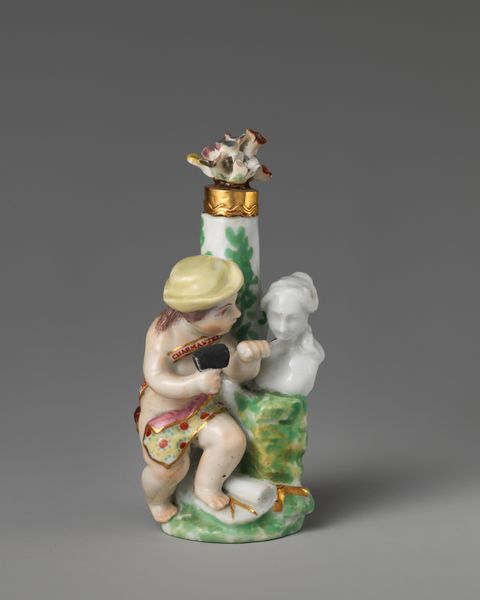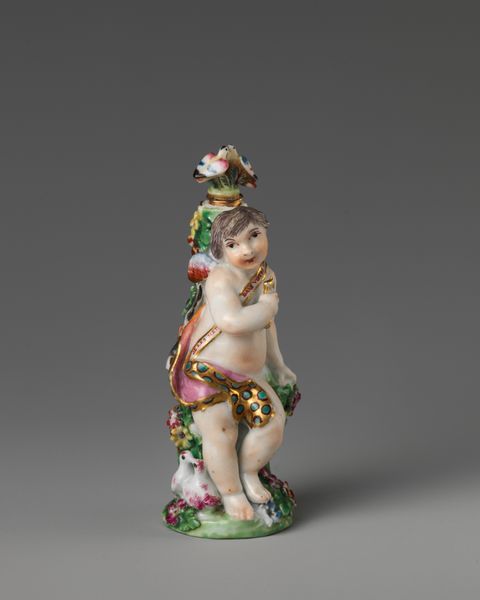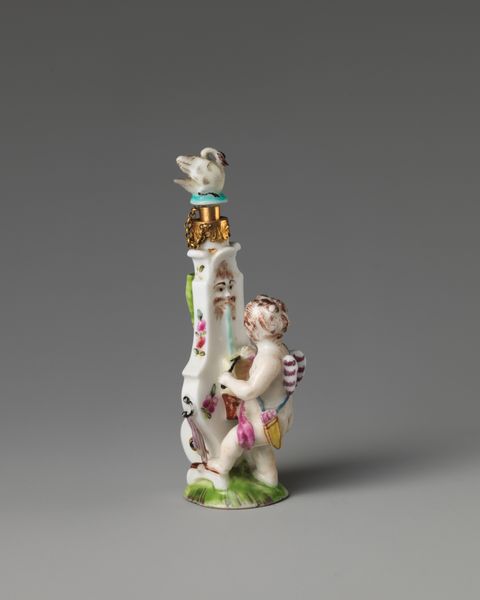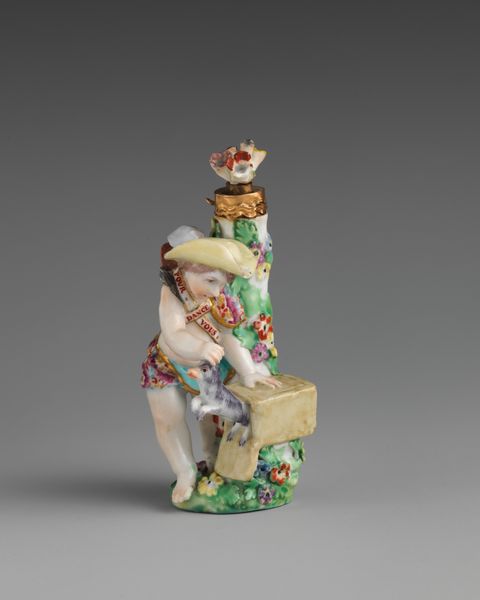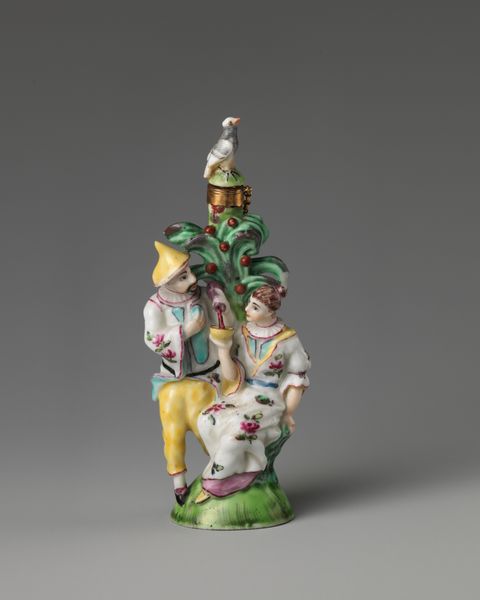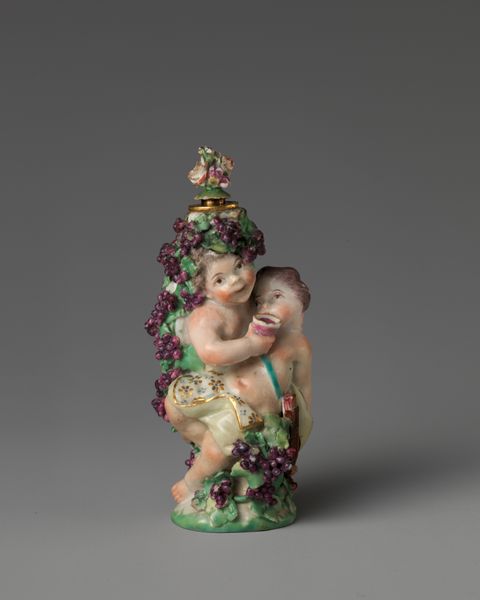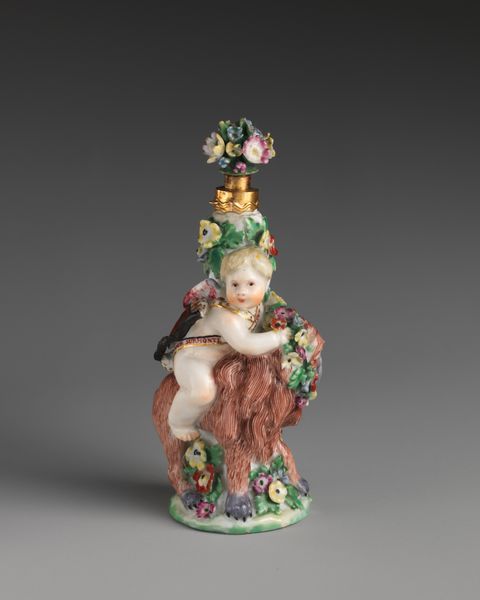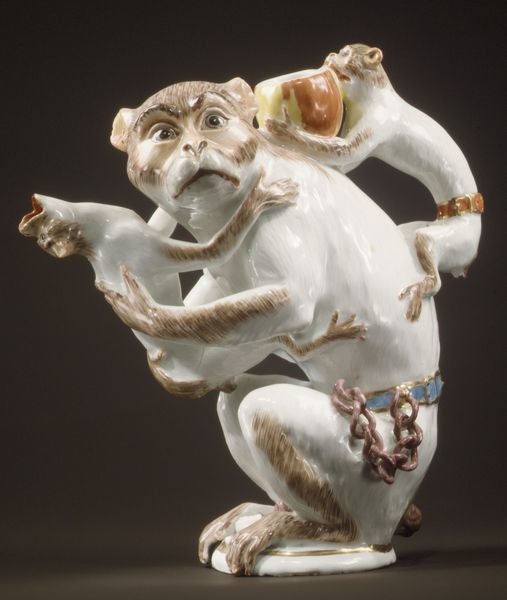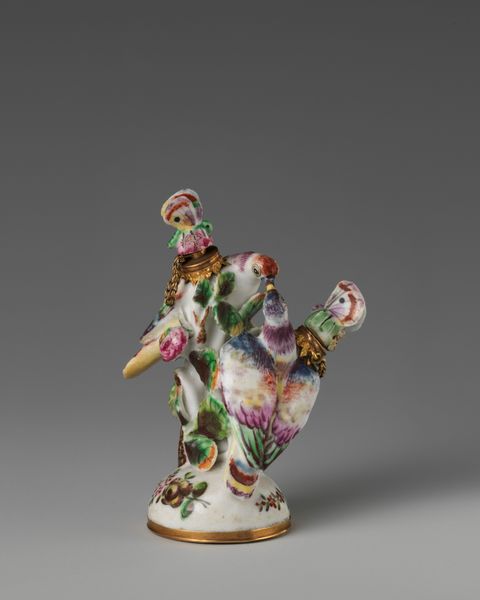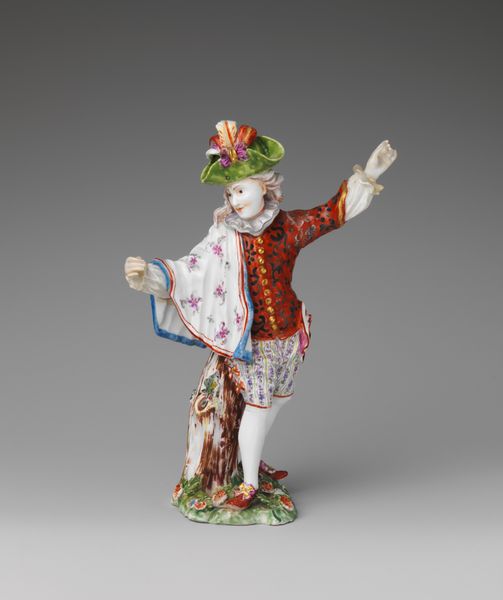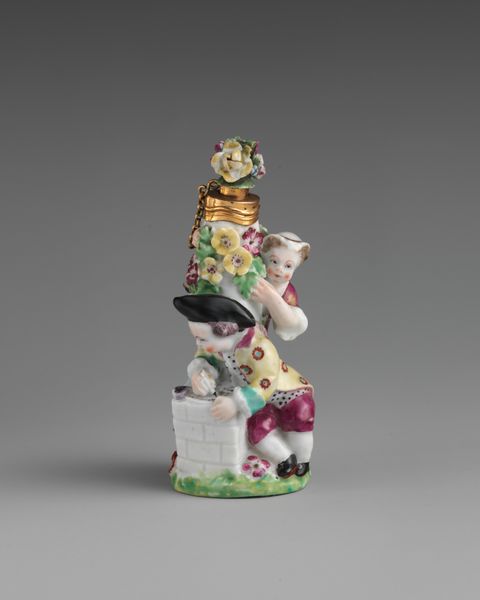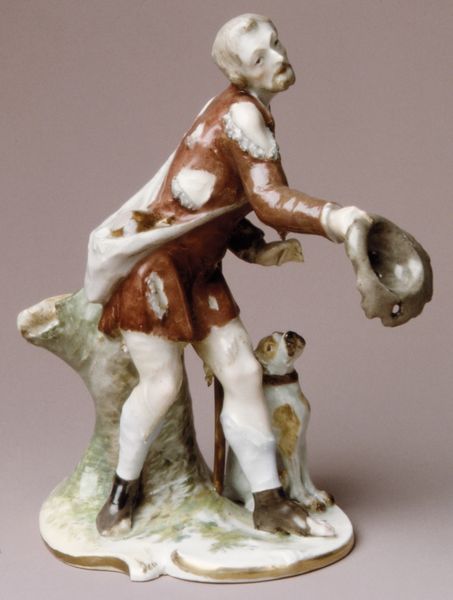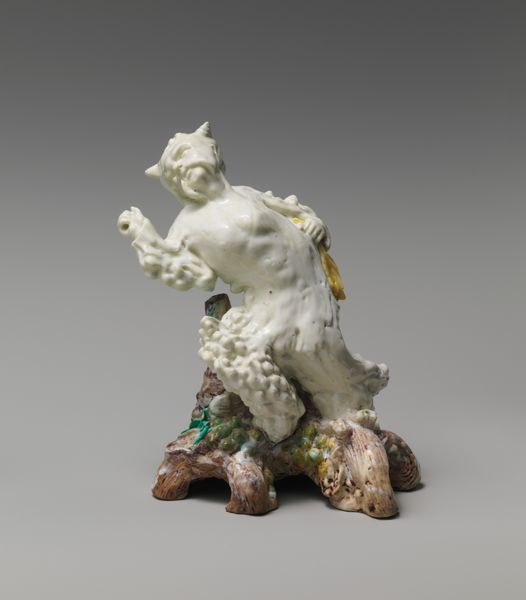
Dimensions: Height: 6 5/16 in. (16 cm)
Copyright: Public Domain
Curator: This is a piece titled "Monkeys," crafted between 1765 and 1775 by the Gardner Manufactory. It is currently held at the Metropolitan Museum of Art. The artists employed porcelain to sculpt this decorative scene. What strikes you upon first viewing this work? Editor: I'm immediately drawn to the fragility of the figures, they seem quite small! Despite their delicate nature, the piece appears lively, brimming with ornate detailing and, frankly, rather cheeky humor. It looks very material-rich, there's clearly value assigned to both labor and to access. Curator: Indeed! Consider the historical context: monkey imagery, often referred to as singerie, became popular in 18th-century Europe. These whimsical depictions frequently served as a satirical commentary on human society, mimicking and often mocking the manners and customs of the aristocracy. Editor: Right. So, beyond mere decoration, it speaks volumes about social hierarchy and the burgeoning merchant classes trying to emulate and potentially parody courtly fashion of the period. Porcelain was itself so highly sought-after, and difficult to manufacture in the West. Curator: Precisely. Notice, for example, how these monkeys are adorned with human-like attire – hats and ruffs. It underscores the period's fascination with, and perhaps anxiety surrounding, issues of class and performativity. The overflowing basket of fruit adds to the tableau, symbolizing wealth and luxury but potentially also excess. What labour practices contributed to producing the "excess"? Editor: Good point, that abundant still life can read quite differently when we scrutinize the relationship between the expensive material and the processes to get here. Looking closely at the fruit and how realistically each type is rendered makes me consider the specialized artisanal knowledge required. Someone understood agriculture here! And beyond understanding materials it implies that a skilled labour force, and its raw ingredients, were all easily and cheaply accessible. Curator: So it acts almost as propaganda. By representing monkeys as wealthy, but also ridiculous figures, does it reinforce the values or satirize wealth and societal values? Whose values? Gardner Factory catered to Catherine the Great - what impact might that patronage have? Editor: It feels ambiguous to me, but I think interrogating this question really helps frame how complex what was a functional aesthetic is in our moment. These pieces make an incredibly material contribution to eighteenth-century intellectual history. Curator: I concur! I now appreciate even further how decorative pieces like "Monkeys" can provide surprisingly complex social commentary for modern audiences to contemplate. Editor: And on how labor and the production of luxury goods often reflect cultural tensions between what we are willing to believe about ourselves versus others.
Comments
No comments
Be the first to comment and join the conversation on the ultimate creative platform.
